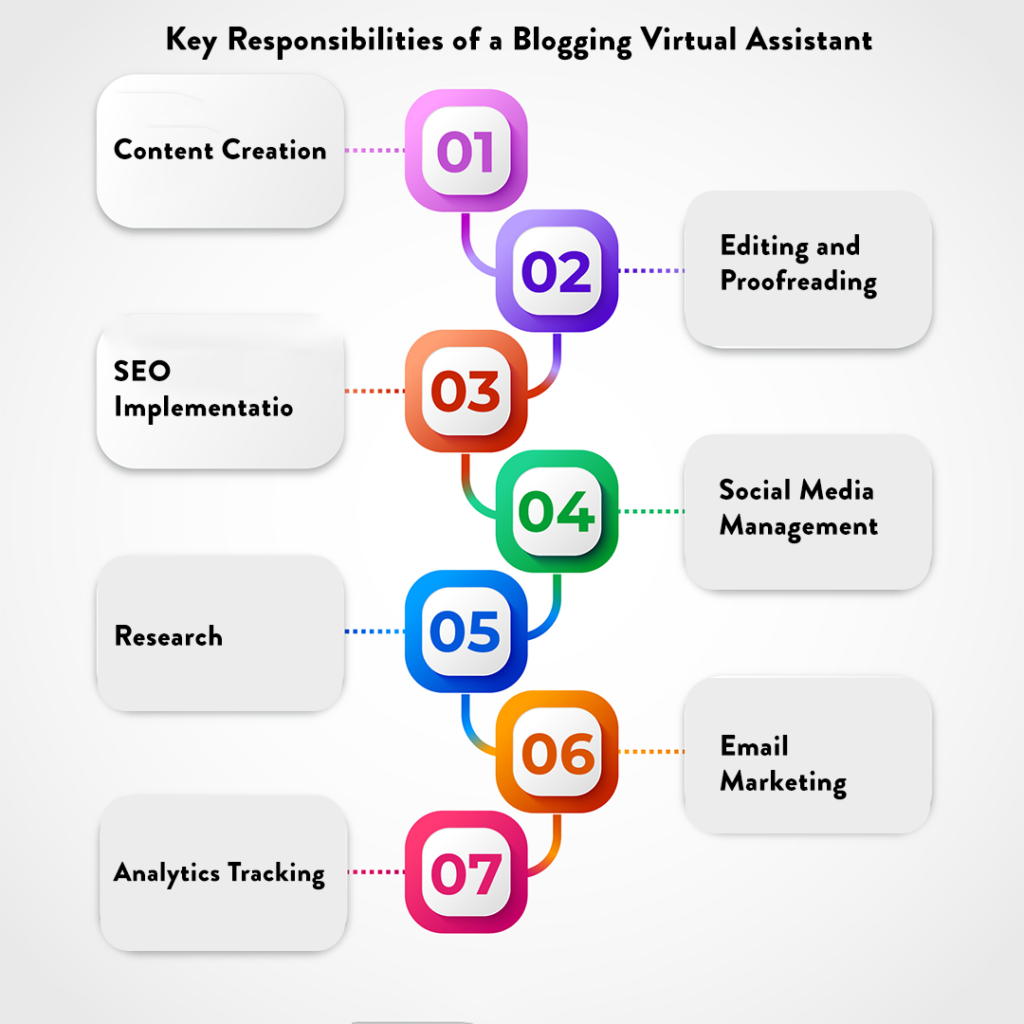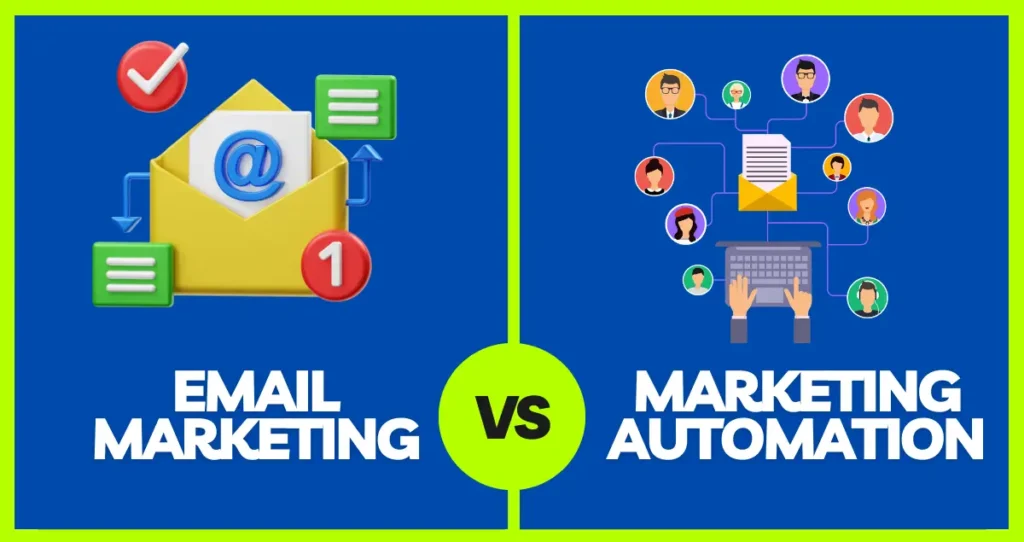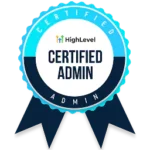A blogging virtual assistant (VA) specializes in supporting bloggers and content creators by managing various tasks necessary for running a successful blog. This role can vary widely based on the client’s needs but typically includes content creation, editing, SEO optimization, social media management, and more.
Key Responsibilities of a Blogging Virtual Assistant

Before diving into how to become a blogging virtual assistant, it’s essential to understand the typical responsibilities associated with this role:
- Content Creation: Writing high-quality blog posts that resonate with the target audience. This includes understanding the client’s brand voice and style.
- Editing and Proofreading: Reviewing content for grammar, punctuation, and clarity to ensure it is polished and professional before publication.
- SEO Implementation: Using keyword research and on-page optimization techniques to enhance the blog’s visibility on search engines.
- Social Media Management: Creating and scheduling social media posts that promote blog content and engage the audience.
- Research: Conducting thorough research to support content development, ensuring that the information presented is accurate and relevant.
- Email Marketing: Designing and managing newsletters to inform subscribers about new blog posts and updates, which helps maintain engagement.
- Analytics Tracking: Monitoring blog performance metrics using tools like Google Analytics to understand audience behavior and improve content strategies.
Also See: What social media virtual assistant can do for you?
Step 1: Develop Your Writing Skills
Writing is at the heart of a blogging VA’s role. To succeed, you need to refine your writing abilities continually. Here’s how to develop those essential skills:
- Read Widely and Critically: Explore various blogs, articles, and books across different genres. Pay attention to how authors structure their content, engage readers, and convey their messages.
- Practice Different Styles: Experiment with different writing styles and tones. Try writing in a conversational tone, formal tone, and even persuasive styles to diversify your skill set.
- Set Writing Goals: Challenge yourself to write regularly. Set goals, such as writing a certain number of words daily or completing a blog post each week, to build discipline and consistency.
Step 2: Learn the Basics of Blogging Platforms
Familiarity with popular blogging platforms is crucial for your role as a VA. The most commonly used platforms include WordPress, Wix, and Squarespace. Here are some ways to gain proficiency:
- Create Your Own Blog: Start a blog on a platform of your choice. This hands-on experience will teach you how to navigate the dashboard, publish posts, and manage settings.
- Utilize Online Tutorials: Leverage free resources available on YouTube or platforms like Udemy to learn the ins and outs of blogging platforms.
- Experiment with Customization: Learn how to customize themes and templates to understand how design affects user experience and engagement.
Step 3: Master SEO Strategies
Search Engine Optimization (SEO) is vital for enhancing the visibility of blog posts. Understanding SEO will not only improve your effectiveness as a VA but also provide immense value to your clients. Here’s how to get started:
- Study SEO Fundamentals: Familiarize yourself with key concepts like keyword research, on-page SEO, meta tags, and link building. Online courses and resources, such as Moz and Ahrefs, can be incredibly helpful.
- Practice Using SEO Tools: Get hands-on experience with tools like Google Analytics, SEMrush, or Yoast SEO. These tools can help you analyze and optimize content effectively.
- Stay Updated on SEO Trends: The world of SEO is constantly evolving. Follow industry blogs and forums to stay informed about the latest trends and algorithm updates.
Related: Why SEO is important for business?
Step 4: Build a Solid Portfolio
A well-crafted portfolio showcases your skills and attracts potential clients. Here’s how to create an impressive portfolio:
- Include a Variety of Writing Samples: Your portfolio should feature different types of writing—blog posts, social media content, email newsletters, and any guest posts. This demonstrates your versatility.
- Start a Blog: If you don’t have enough client work to showcase, consider blogging about your interests or experiences. This not only provides samples but also shows your commitment to the craft.
- Request Testimonials: When you complete projects for clients, ask for feedback and testimonials. Positive reviews can enhance your credibility and help you stand out to potential clients.
Step 5: Network and Market Yourself Effectively
Building a network is essential for finding clients and growing your business as a virtual assistant. Here’s how to effectively market yourself:
- Leverage Social Media: Use platforms like LinkedIn, Twitter, and Instagram to share your expertise. Engage with others in the blogging and virtual assistant communities by commenting on posts and joining relevant groups.
- Join Online Communities: Participate in Facebook groups, forums, or LinkedIn groups focused on blogging and virtual assistance. These communities often provide leads, resources, and support.
- Attend Webinars and Workshops: Look for online events that focus on blogging, content creation, and virtual assistance. These are excellent opportunities to learn and connect with potential clients.
Step 6: Set Competitive Rates
Determining how much to charge can be challenging, especially for those new to freelancing. Here are some pricing strategies to consider:
- Research Market Rates: Look into what other blogging virtual assistants are charging. Rates can vary widely based on experience, expertise, and services offered.
- Choose a Pricing Model: Decide whether you want to charge hourly, per project, or offer retainer agreements. Each model has its pros and cons, so choose what aligns best with your workflow and client needs.
- Be Transparent: Clearly communicate your rates and what clients can expect in return. This builds trust and helps avoid misunderstandings down the line.
Step 7: Create a Business Plan
A solid business plan acts as a roadmap for your career as a blogging virtual assistant. Here’s what to include:
- Define Your Niche: Identify your target audience and the types of bloggers or businesses you want to work with. This focus will help streamline your marketing efforts.
- Outline Your Services: List the specific services you offer, such as blog writing, editing, SEO, and social media management. This clarity helps clients understand what you can provide.
- Set Goals: Establish short-term and long-term goals for your business. Whether it’s earning a specific income or acquiring a certain number of clients, having goals keeps you motivated.
Business Guide: Complete guide to start virtual assistant business?
Step 8: Stay Updated on Industry Trends
The blogging landscape is ever-changing. Staying informed about industry trends ensures that you provide relevant and effective services. Here’s how to stay current:
- Subscribe to Industry Newsletters: Follow blogs and websites that cover blogging, content marketing, and SEO trends. Newsletters from HubSpot, Content Marketing Institute, and Neil Patel are great places to start.
- Engage with Online Courses: Continuously seek opportunities for learning. New tools and strategies emerge regularly, and staying informed keeps you ahead of the curve.
- Join Professional Organizations: Consider joining organizations focused on digital marketing or freelance work. These groups often provide resources, training, and networking opportunities.
Step 9: Expand Your Skill Set
As you grow more confident in your role, consider expanding your skills to offer more comprehensive services. This can enhance your appeal to potential clients. Here are a few skills to consider:
- Social Media Strategy: Learning how to create effective social media strategies can be a game-changer. Understanding how to engage audiences on various platforms adds significant value.
- Graphic Design Basics: Familiarity with design tools like Canva or Adobe Spark can help you create eye-catching visuals for blog posts and social media.
- Email Marketing Proficiency: Understanding how to design and execute email marketing campaigns can complement your blogging services and provide additional benefits to clients.
Step 10: Prioritize Excellent Customer Service
Delivering outstanding customer service is crucial in building long-lasting relationships with clients. Here are some tips for providing exceptional service:
- Communicate Clearly: Keep clients informed about project timelines and progress. Regular communication builds trust and ensures everyone is on the same page.
- Be Flexible and Adaptable: Every client has unique needs. Being willing to adjust your services based on feedback and preferences can lead to stronger relationships.
- Go the Extra Mile: Always strive to exceed client expectations. Whether it’s delivering work ahead of schedule or suggesting new ideas, showing initiative can set you apart from others.
Final Words
Becoming a blogging virtual assistant is an exciting and fulfilling career path for those with a passion for writing and a desire to help others succeed online. By honing your writing skills, mastering essential tools, and effectively marketing yourself, you can carve out a niche for yourself in this growing field. With dedication, a willingness to learn, and a commitment to providing excellent service, you can turn your passion for blogging into a rewarding career.







